Simple’s intermittent fasting food list: what to eat

One of the biggest selling points of intermittent fasting is that it’s all about when you eat rather than what you eat. And it’s totally flexible and customizable to your body, goals, and preferences.

That’s right: if you’re a cake lover, rejoice. This is one food routine where you can actually have your cake and eat it, too. (If you’re not feeling the Marie Antoinette fantasy, you can swap out “cake” for whatever food you please, too.)
That said, while nothing is off limits from your intermittent fasting food list, we don’t recommend eating cake (or pizza, fries, burgers, or ice cream … ) every day if you’re looking to support your overall health and get the best intermittent fasting results.
So, to help you navigate what intermittent fasting foods to eat and avoid (spoiler alert: it’s about prioritizing certain ones and limiting rather than completely avoiding others), we’ve put together our ultimate fasting foods list to guide your grocery shopping and pantry prep.

What to eat while intermittent fasting
If you’ve ever had that moment of staring listlessly into the fridge or being overwhelmed in a grocery store (Maybe there is such a thing as too much choice? And what about all that fine print on labels?!), you’re not alone. Knowing what foods / calories will support your body and fasting goals can be tricky.
Just because you’re fasting doesn’t mean your body needs less nutrition. Generally speaking, you want to focus on health-promoting foods during your eating window, which means fruits, vegetables, whole grains, lean and plant-based protein, dairy (or calcium-fortified, dairy-free foods), and healthy fats like nuts and seeds. These foods not only fuel your body with nutrients but also keep you fuller for longer, help you manage your blood sugar, and fend off pesky potential side effects.
However, everyone’s nutritional needs differ, and what’s right for you may not be for someone else. Plus, your tastes, preferences, budget, and reasons for fasting are unique to you, so naturally, your eating routine will be, too.
That’s one reason why we always recommend consulting your healthcare provider before trying intermittent fasting or making any changes to your lifestyle or eating habits. No matter what you eat during the experience, fasting also isn’t safe or right for everyone, so it’s important to get medical approval before giving it a whirl.
If you’ve gotten that sign-off, we’re ready to step up to your plate and help you figure out what to eat during intermittent fasting and how to meal plan for your needs and goals. Whether you’re after something specific, like an intermittent fasting food list for weight loss, or just looking to understand meal planning and intermittent fasting for beginners, take our Simple quiz to unlock personalized food shopping tips and meal inspo.
What to avoid while intermittent fasting
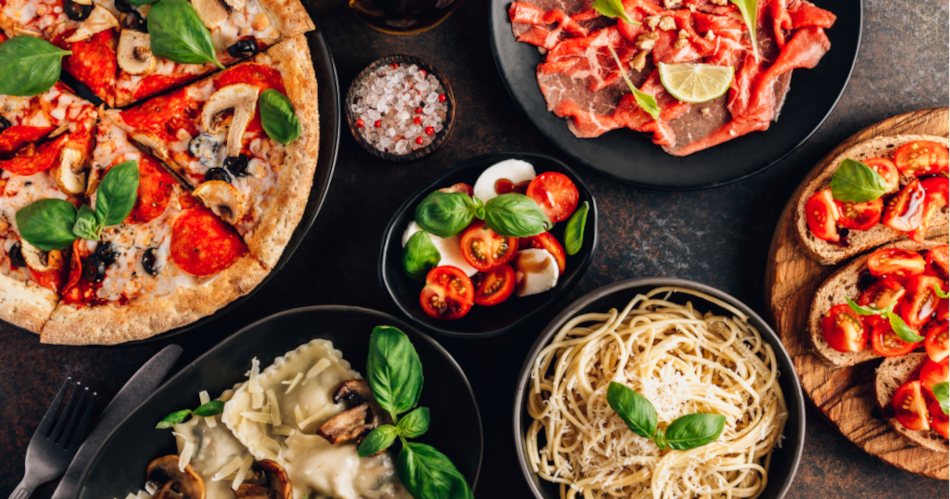
As anyone who has ever lived a forbidden romance (or been a teenager) will tell you, a seemingly surefire way to make you want something more — even to the detriment of your well-being — is if you’re told you have to avoid it. Just look at Romeo and Juliet.
Unless you’re avoiding certain foods because of allergies or a medical condition, we never recommend going into any eating routine with the mentality of “This food is bad for me, and I need to avoid it.” No food is inherently bad, calories are friends (not foes!), and arbitrary restrictions just make your life harder (and potentially more miserable) for no reason. Again, here’s to you, Juliet and Romeo.
So, rather than striking certain things off your intermittent fasting foods list completely, think in terms of what to limit. While your specific “food for fasting” hitlist will depend on your individual needs and reasons for fasting, to get the best results, limit:
- foods high in refined carbohydrates (like pastries, white bread, pizza, breakfast cereals, sweetened juices / teas, and regular soda), which are linked to impaired metabolic, cardiovascular, and poor mental health;[1]
- foods high in saturated or trans fats (like fried foods, commercial baked goods, nondairy coffee creamer, butter, ice cream, and processed meats), which are linked to heart disease, metabolic disorders, and obesity;[2] and
- alcohol, which, in excess, has been linked to health risks like heart disease, type 2 diabetes, and certain cancers,[3] as well as exacerbating intermittent fasting side effects (like poor sleep, headaches, and increased appetite) and leading to intermittent fasting mistakes (like dehydration or overeating).
The ultimate intermittent fasting food list
In addition to ensuring you’re meeting your daily caloric needs (which you can estimate with our calorie counter), you want to ensure your mind, body, and soul are getting everything they need during your eating windows to support you through your fasting windows.
Beyond catering to these needs, what you eat as part of your intermittent fasting routine is entirely up to you and what you want to achieve from the process.
To boost potential intermittent fasting benefits and support your overall health and well-being, here are superstars to spotlight on your plate.
Fruits
There’s a reason most guidelines recommend “five a day” servings of fruits and vegetables — both are packed with nutrients, have anti-inflammatory properties, and help prevent chronic diseases (especially heart disease, breast cancer, and type 2 diabetes [4,5,6]).[7] They can also support weight loss, boost your immune system, and help manage blood pressure.[8,9,10]
Fruits are excellent health-promoting choices for a few reasons. They are:
- packed with vitamins, minerals, and water;
- rich in fiber (which supports digestion, promotes fullness, and benefits gut health); and
- filled with antioxidants and compounds called polyphenols (which protect against certain diseases, reduce inflammation, and support heart, brain, and immune health).
The majority of fruits are also low in sugar, and what sugar they do have is natural (which doesn’t impact health in the same way as added sugars).
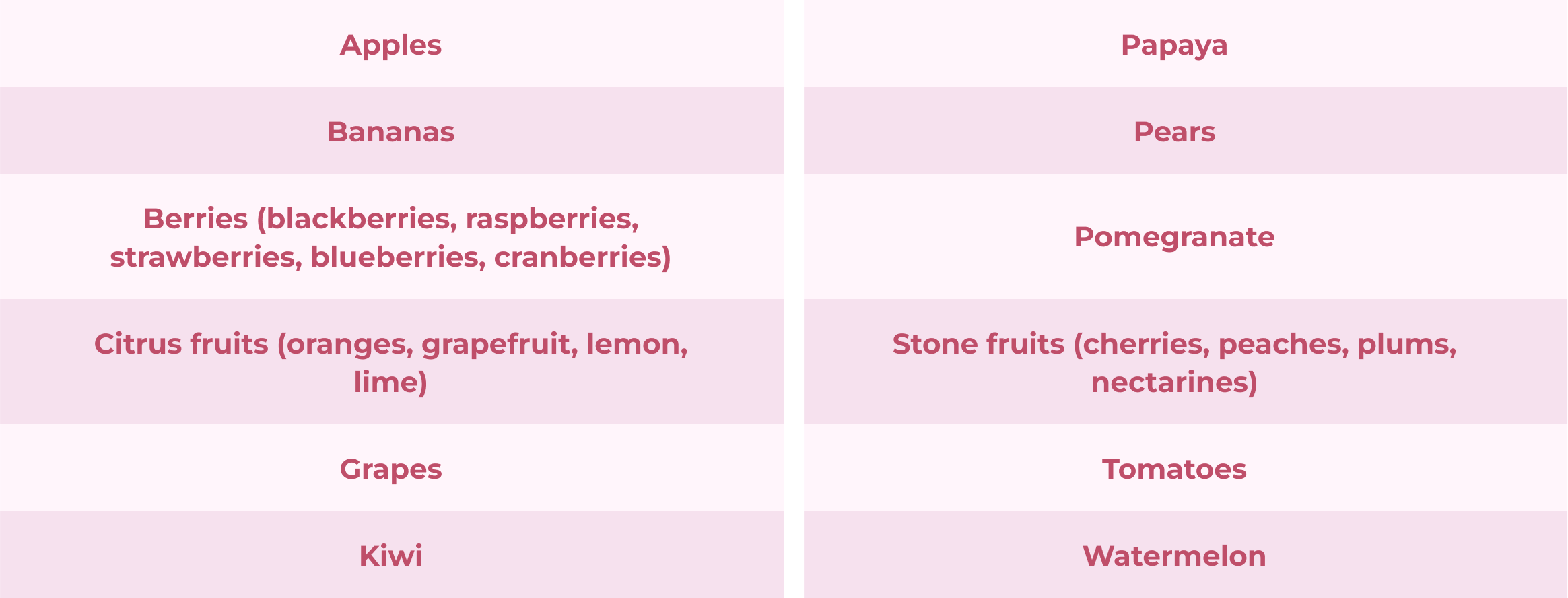
Vegetables
Vegetables are often studied in conjunction with fruits, so they’re also known for all the benefits mentioned above (especially with respect to reducing the risk of heart disease [11]). Certain vegetables (like beets) are also leading sources of natural nitrates, which can improve blood flow and blood pressure.[12]
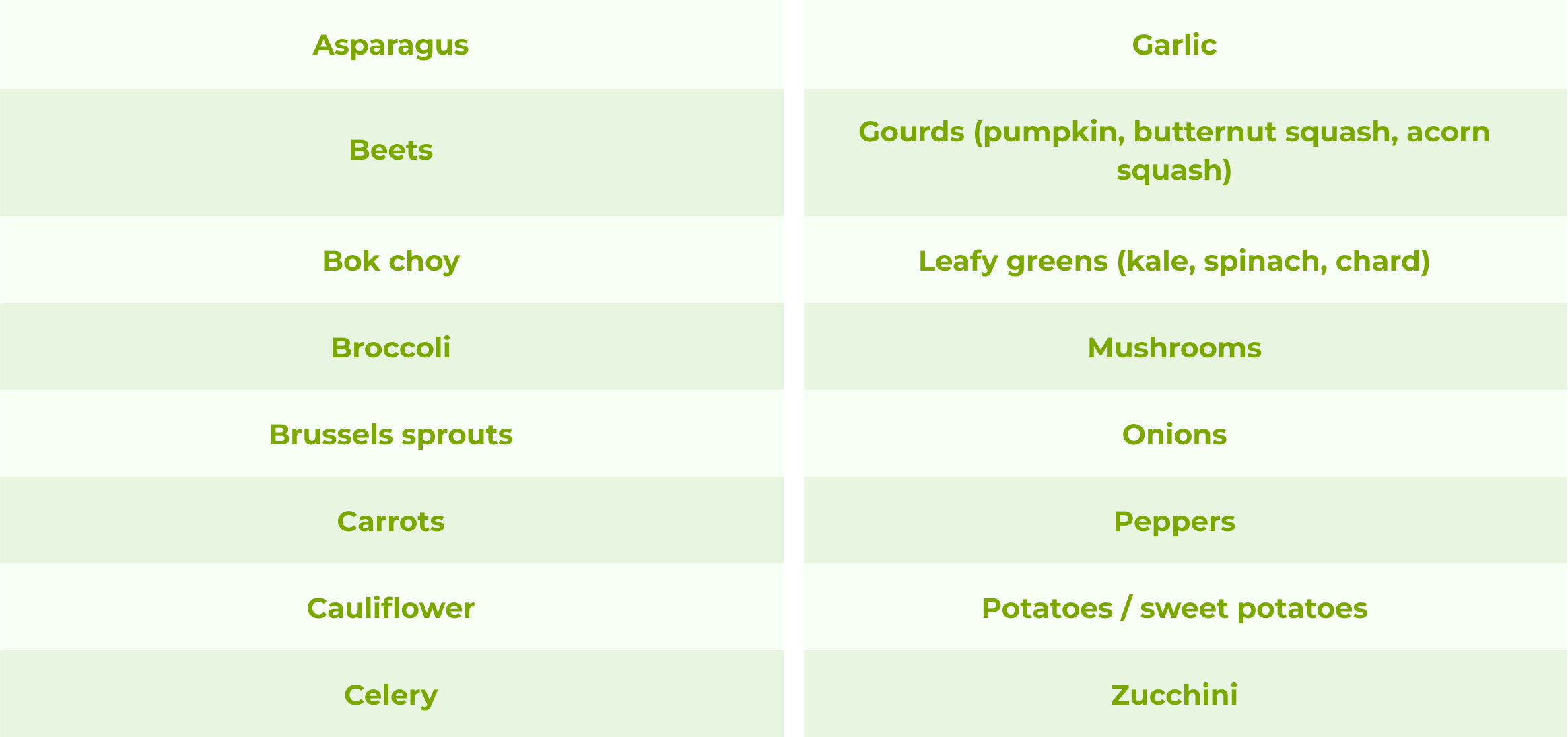
Healthy fats
Fat often gets a bad rep, but it’s not something to avoid completely — it gives us energy, protects our cells, and helps us absorb important nutrients. The key is to limit calories from saturated and trans fats (which are linked to increased health risks, especially heart disease [13,14]) and instead focus on moderate amounts of monosaturated fatty acids and polyunsaturated fatty acids (like omega-3 and omega-6 fatty acids), which can benefit heart health, support brain functions, reduce abdominal fat, and improve insulin sensitivity.[15,16,17]
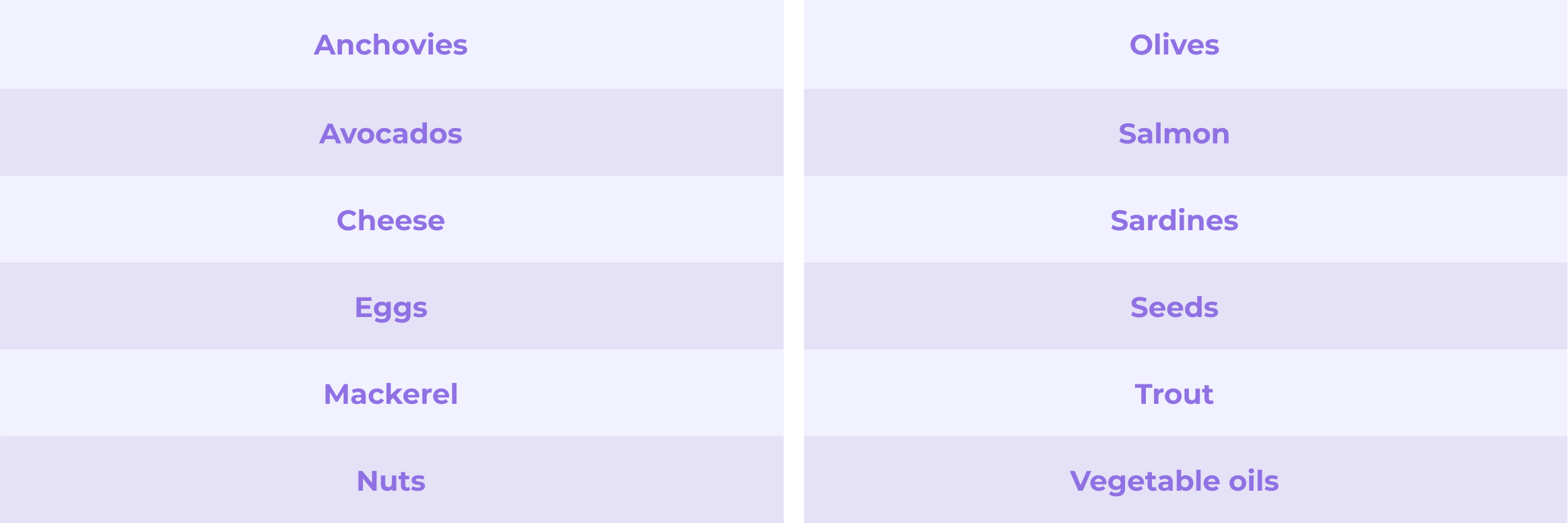
Whole grain carbs
Compared to refined grains like white bread, whole grains retain more body-benefitting nutrients that have been linked to a range of health benefits, like better heart health and cholesterol levels, type 2 diabetes prevention, and limiting the risk of certain cancers.[18,19,20]

Lean protein
Protein plays an important role in building muscle, repairing cells and tissues, and maximizing physical activity results.[21,22] It’s also a great nutrient for helping you feel full, so ensuring you’re getting enough of it is one of our favorite ways to hack hunger while fasting.[23]
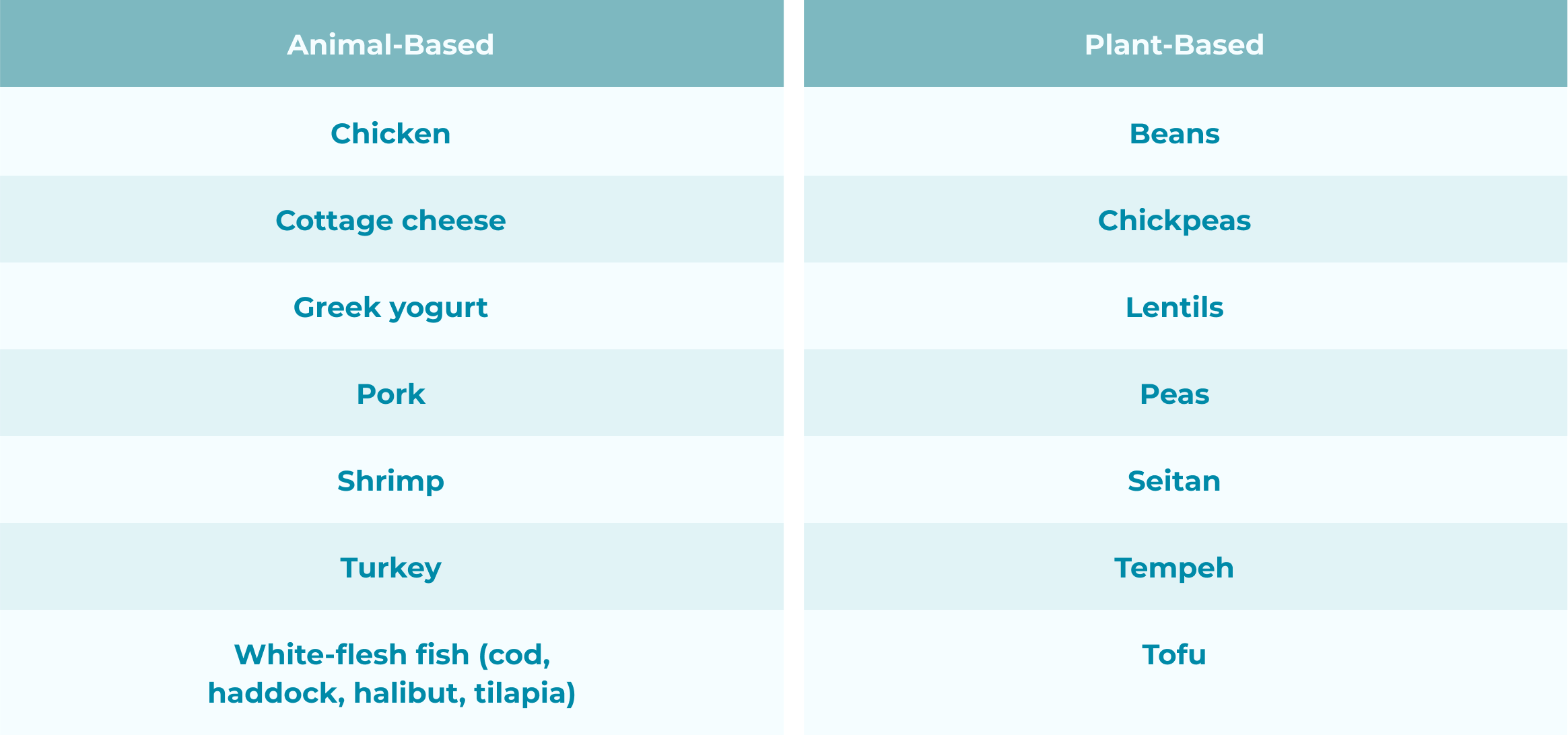
Probiotics
Probiotics (live microorganisms like bacteria / yeasts) may be small, but they can pack a big health-benefiting punch when we eat enough of them. In addition to supporting gut health and digestion,[24] they may also help with regulating blood sugar.[25]
While you can take probiotic supplements, we recommend getting them from naturally occurring sources instead.

Hydration
Staying hydrated is extra important while you’re fasting because water helps with a whole lot of valuable body stuff, like removing waste, burning fat, and regulating blood pressure. If you’re not a fan of plain H2O, jazz it up with fruits, herbs, or spices. Some other low-calorie drinks like black coffee, diet soda, and plain, unsweetened green tea also contain water, but you’ll want to be conscious of caffeine and potential artificial sweetener side effects. We explain more in our “What you can drink while fasting” guide.
Healthy snack alternatives
We get it: if you’re seriously craving ice cream, eating a banana or having some yogurt (even if it’s frozen) isn’t exactly going to be a satisfying substitute.
We’re not here to judge if it’s one of those days where it feels like your sanity or comfort depends on a certain food — your eating routine should never get in the way of your well-being. Plus, in our opinion, the safest, healthiest, and most effective eating routine is one that you can stick to, and strictly avoiding certain foods 24/7/365 is not conducive to that.
Depending on your reasons for fasting, though, there may be times when you want to push through a craving or find a different way to satisfy it. If that’s the case, here are some of our favorite snack swaps.
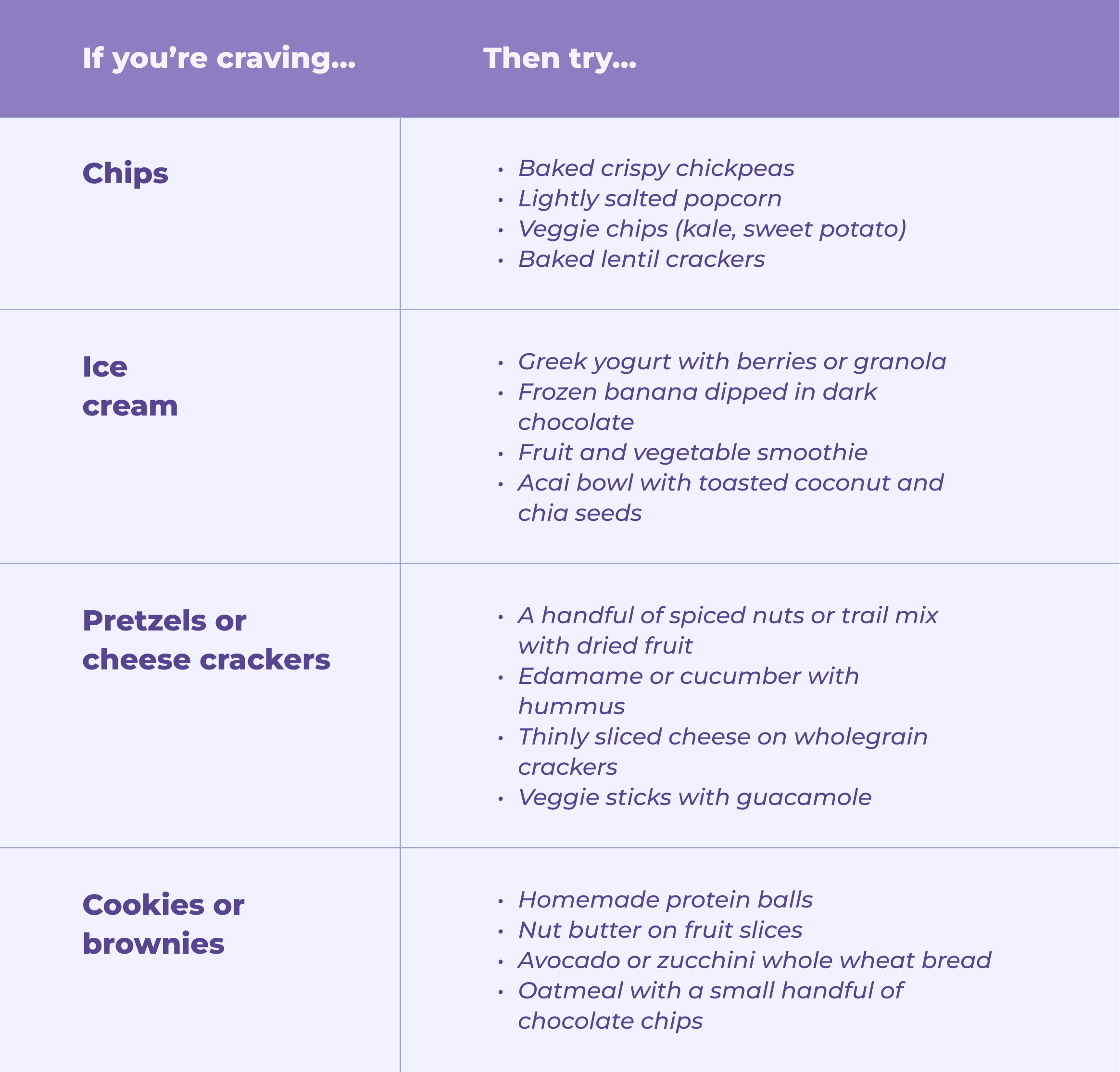
Intermittent fasting and different diets
Since intermittent fasting is a choose-your-own-adventure type of plot, it can also work well alongside other eating routines. Whether you’re a meat-lover or vegan, free from dairy, gluten, nuts, or other allergens, or following a certain training program, intermittent fasting gives you the flexibility to choose what foods work for you and your dietary requirements. As long as you’re still meeting your daily nutritional needs, getting enough calories, and not compromising on your health or well-being, you’re good to go.
To make sure fasting is safe for you — especially if you have existing medical conditions or dietary requirements — always check with your healthcare provider before adjusting your eating routine.
If you’ve gotten that approval, we can help you figure out the best way to combine intermittent fasting with your current eating habits. Get started with our Simple quiz so we can get to know you and offer personalized recommendations.
Intermittent fasting and a keto diet
If you’re considering combining intermittent fasting with keto, it’s worth noting there’s limited research that suggests a keto diet is effective and safe long-term,[26] especially with respect to gut health and cardiovascular / metabolic risks, even if it may be beneficial in the short-term for some health conditions.[27]
For maximizing short-term keto benefits while fasting, aim for a low-carb intermittent fasting food list. That means prioritizing:
- lean protein (turkey, chicken, eggs, lentils, tempeh)
- fish and seafood (shrimp, tuna, salmon, sardines)
- fruits and veggies (avocados, bell peppers, spinach, berries)
- dairy (cottage cheese, greek yogurt, cheese) or unsweetened plant-based milks
- healthy fats (nuts, seeds, olive oil)
- low-carb alternatives (peas, sweetcorn, quinoa, chickpeas, and lentils)
You’ll also want to limit calories from higher refined carb foods like white bread, pasta, rice, juices, sweets, pastries, and chocolates.
Intermittent fasting and a vegetarian diet
No meat? No problem!
If you’re a vegetarian, you’re probably already used to finding ways to meet your daily nutritional needs without animal protein. With this combined eating routine, you’ll just need to be extra mindful of making sure you get enough protein calories and vitamins / minerals during eating windows — plus complex carbs and fiber, which are important for keeping you full and satiated without spiking your blood sugar.
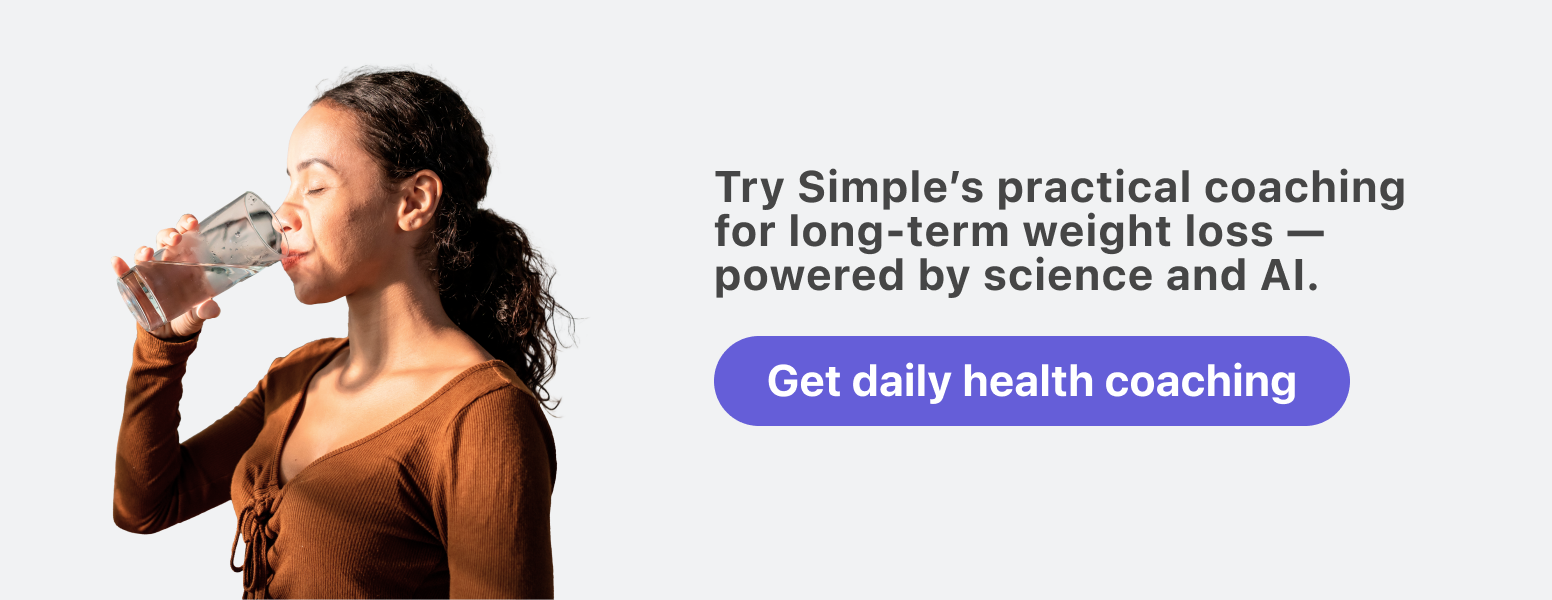
Limit foods high in salt, sugar, and trans / saturated fat and focus on:
- plant-based proteins (tofu, beans, lentils, chickpeas, tempeh, seitan)
- nuts and seeds
- dairy (milk, cheese, yogurt)
- whole grain carbs (brown rice, quinoa, oats)
- leafy green veggies (kale, spinach, Swiss chard, bok choy)
- other veggies and fruits, especially those high in fiber (broccoli, sweet potatoes, carrots, eggplant, cauliflower, pears, strawberries, avocados, apples, berries)
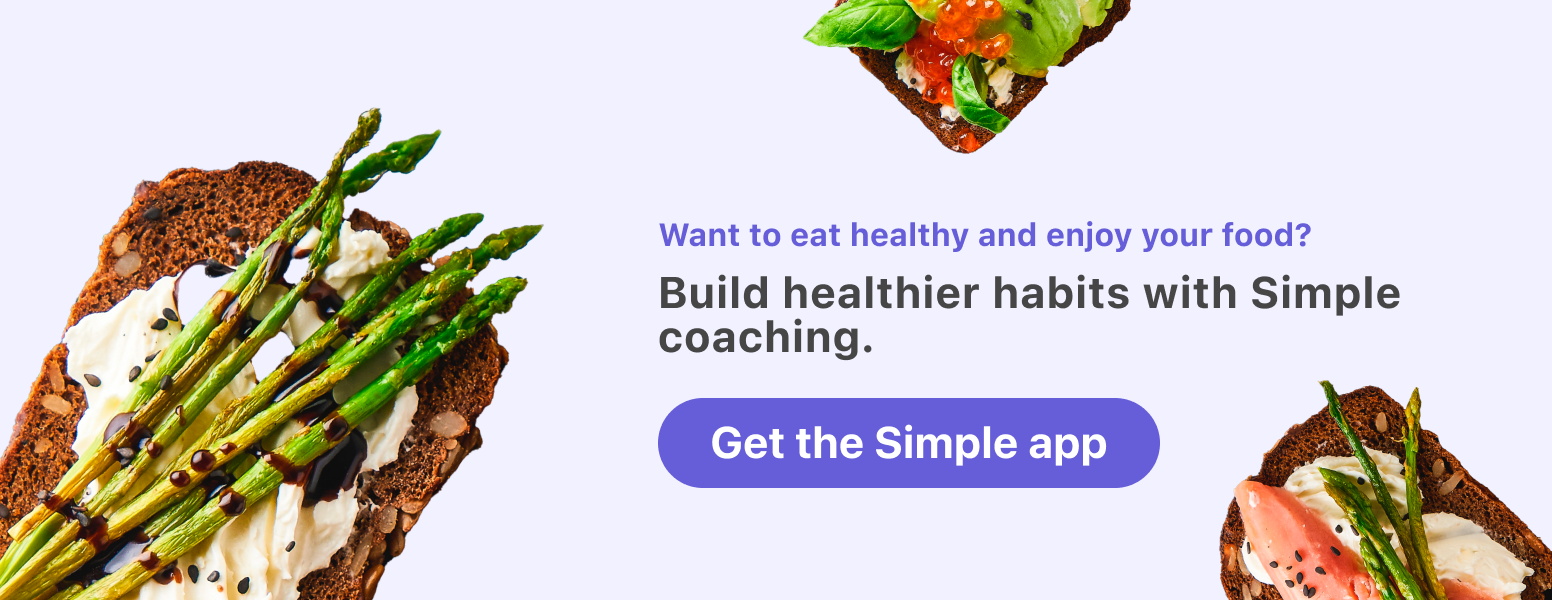
- Clemente-Suárez VJ, Mielgo-Ayuso J, Martín-Rodríguez A, Ramos-Campo DJ, Redondo-Flórez L, Tornero-Aguilera JF. The Burden of Carbohydrates in Health and Disease. Nutrients [Internet]. 2022 Sep 15;14(18).
- Clifton P. Metabolic Syndrome-Role of Dietary Fat Type and Quantity. Nutrients [Internet]. 2019 Jun 26;11(7).
- Levesque C, Sanger N, Edalati H, Sohi I, Shield KD, Sherk A, et al. A systematic review of relative risks for the relationship between chronic alcohol use and the occurrence of disease. Alcohol. 2023 Jul;47(7):1238–55.
- Zurbau A, Au-Yeung F, Blanco Mejia S, Khan TA, Vuksan V, Jovanovski E, et al. Relation of Different Fruit and Vegetable Sources With Incident Cardiovascular Outcomes: A Systematic Review and Meta-Analysis of Prospective Cohort Studies. J Am Heart Assoc. 2020 Oct 20;9(19):e017728.
- Farvid MS, Chen WY, Michels KB, Cho E, Willett WC, Eliassen AH. Fruit and vegetable consumption in adolescence and early adulthood and risk of breast cancer: population based cohort study. BMJ. 2016 May 11;353:i2343.
- Halvorsen RE, Elvestad M, Molin M, Aune D. Fruit and vegetable consumption and the risk of type 2 diabetes: a systematic review and dose-response meta-analysis of prospective studies. BMJ Nutr Prev Health. 2021 Jul 2;4(2):519–31.
- Wang DD, Li Y, Bhupathiraju SN, Rosner BA, Sun Q, Giovannucci EL, et al. Fruit and Vegetable Intake and Mortality: Results From 2 Prospective Cohort Studies of US Men and Women and a Meta-Analysis of 26 Cohort Studies. Circulation. 2021 Apr 27;143(17):1642–54.
- Mytton OT, Nnoaham K, Eyles H, Scarborough P, Ni Mhurchu C. Systematic review and meta-analysis of the effect of increased vegetable and fruit consumption on body weight and energy intake. BMC Public Health. 2014 Aug 28;14:886.
- Hosseini B, Berthon BS, Saedisomeolia A, Starkey MR, Collison A, Wark PAB, et al. Effects of fruit and vegetable consumption on inflammatory biomarkers and immune cell populations: a systematic literature review and meta-analysis. Am J Clin Nutr. 2018 Jul 1;108(1):136–55.
- Madsen H, Sen A, Aune D. Fruit and vegetable consumption and the risk of hypertension: a systematic review and meta-analysis of prospective studies. Eur J Nutr. 2023 Aug;62(5):1941–55.
- Aune D, Giovannucci E, Boffetta P, Fadnes LT, Keum N, Norat T, et al. Fruit and vegetable intake and the risk of cardiovascular disease, total cancer and all-cause mortality-a systematic review and dose-response meta-analysis of prospective studies. Int J Epidemiol. 2017 Jun 1;46(3):1029–56.
- Machha A, Schechter AN. Dietary nitrite and nitrate: a review of potential mechanisms of cardiovascular benefits. Eur J Nutr. 2011 Aug;50(5):293–303.
- Islam MA, Amin MN, Siddiqui SA, Hossain MP, Sultana F, Kabir MR. Trans fatty acids and lipid profile: A serious risk factor to cardiovascular disease, cancer and diabetes. Diabetes Metab Syndr. 2019 Mar 16;13(2):1643–7.
- Wise J. High intake of saturated fats is linked to increased risk of heart disease. BMJ [Internet]. 2016 Nov 24 [cited 2023 Aug 23];355.
- Ander BP, Dupasquier CM, Prociuk MA, Pierce GN. Polyunsaturated fatty acids and their effects on cardiovascular disease. Exp Clin Cardiol. 2003 Winter;8(4):164–72.
- Gómez-Pinilla F. Brain foods: the effects of nutrients on brain function. Nat Rev Neurosci. 2008 Jul;9(7):568–78.
- DiNicolantonio JJ, O’Keefe JH. Monounsaturated Fat vs Saturated Fat: Effects on Cardio-Metabolic Health and Obesity. Mo Med. 2022 Jan-Feb;119(1):69–73.
- Wei X, Yang W, Wang J, Zhang Y, Wang Y, Long Y, et al. Health Effects of Whole Grains: A Bibliometric Analysis. Foods [Internet]. 2022 Dec 18;11(24).
- Marshall S, Petocz P, Duve E, Abbott K, Cassettari T, Blumfield M, et al. The Effect of Replacing Refined Grains with Whole Grains on Cardiovascular Risk Factors: A Systematic Review and Meta-Analysis of Randomized Controlled Trials with GRADE Clinical Recommendation. J Acad Nutr Diet. 2020 Nov;120(11):1859–83.e31.
- Gaesser GA. Whole Grains, Refined Grains, and Cancer Risk: A Systematic Review of Meta-Analyses of Observational Studies. Nutrients [Internet]. 2020 Dec 7;12(12).
- Stokes T, Hector AJ, Morton RW, McGlory C, Phillips SM. Recent Perspectives Regarding the Role of Dietary Protein for the Promotion of Muscle Hypertrophy with Resistance Exercise Training. Nutrients [Internet]. 2018 Feb 7;10(2).
- Nunes EA, Colenso-Semple L, McKellar SR, Yau T, Ali MU, Fitzpatrick-Lewis D, et al. Systematic review and meta-analysis of protein intake to support muscle mass and function in healthy adults. J Cachexia Sarcopenia Muscle. 2022 Apr;13(2):795–810.
- Morell P, Fiszman S. Revisiting the role of protein-induced satiation and satiety. Food Hydrocoll. 2017 Jul 1;68:199–210.
- Cerdó T, García-Santos JA, G Bermúdez M, Campoy C. The Role of Probiotics and Prebiotics in the Prevention and Treatment of Obesity. Nutrients [Internet]. 2019 Mar 15;11(3).
- Tay A, Pringle H, Penning E, Plank LD, Murphy R. PROFAST: A Randomized Trial Assessing the Effects of Intermittent Fasting and Lacticaseibacillus rhamnosus Probiotic among People with Prediabetes. Nutrients [Internet]. 2020 Nov 17;12(11).
- Batch JT, Lamsal SP, Adkins M, Sultan S, Ramirez MN. Advantages and Disadvantages of the Ketogenic Diet: A Review Article. Cureus. 2020 Aug 10;12(8):e9639.
- Crosby L, Davis B, Joshi S, Jardine M, Paul J, Neola M, et al. Ketogenic Diets and Chronic Disease: Weighing the Benefits Against the Risks. Front Nutr. 2021 Jul 16;8:702802.
